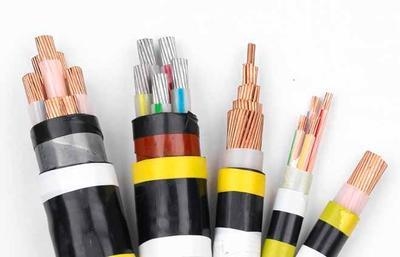
Privacy statement: Your privacy is very important to Us. Our company promises not to disclose your personal information to any external company with out your explicit permission.

Henan Yijiao Trading Co., Ltd

![]() November 06, 2022
November 06, 2022

[China Aluminum] In the domestic photovoltaic system, in order to reduce the power consumption, protect people's lives and property safety, and extend the system life, it is recommended to use copper cables.
Aluminum wire is easier to catch fire than copper wire
In electrical lines, aluminum wires are much more dangerous than copper wires. In fact, the ignition of the aluminum wire is not in the aluminum wire itself but in the connection of the aluminum wire. Compared with copper wire, the aluminum wire connection has a large number of fire hazards due to the following points:
1) Copper-aluminum connectors are prone to electrochemical corrosion
Photovoltaic modules, inverters and grid-connected switches are to be connected by cables. Components MC4 connectors, photovoltaic inverter output terminals and grid-connected switch terminals are all made of copper cores. Copper and aluminum can be directly connected. When it is necessary to connect, copper-aluminum transition clamps must be used, and the copper-aluminum transition joints must be reconnected. However, the current copper-aluminum joints are generally high-powered, and home-distributed photovoltaics are generally between 2-30 KW, using 2.5-10 mm copper wires. There are very few copper-aluminum joints on the market. In fact, the installers using aluminum wire are all trying to save costs, and they will not use copper and aluminum connectors at all.
When copper and aluminum are directly connected, a chemical battery is formed because aluminum easily loses electrons and becomes a negative electrode. Copper hardly loses electrons and becomes a positive electrode. Therefore, a 1.69 V electromotive force is formed between the positive and negative electrodes, and there is one. A very small current passes through and corrodes the aluminum wire, ie electrochemical corrosion. This will cause poor contact between copper and aluminum, increasing contact resistance. When current is passed, the temperature of the joint will increase, and the temperature will increase and the corrosion of the joint will be accelerated, increasing the contact resistance and causing a vicious cycle until it burns.
2) The surface of aluminum wire is easily oxidized in the air.
Wherever the conductor surface has more or less film resistance. If the membrane resistance causes the connection to overheat, and the overheating causes the membrane resistance to increase, the conductive condition deteriorates, and this type of overheating in the aluminum wire connection is particularly serious. This is because even if the surface of the aluminum wire is scratched and polished, it can be oxidized by exposing it to air for a few seconds and an aluminum oxide film can be immediately formed. Although its thickness is only a few micrometers, it has a high resistivity and thus exhibits a large film resistance. Therefore, in the construction of the aluminum wire connection, a conductive paste shall be applied immediately after the surface of the aluminum wire is scratched to block the contact of the aluminum wire connecting surface with air, otherwise the contact resistance will increase.
3) It is easily etched by hydrogen chloride.
Another problem may arise with PVC-insulated aluminum core wires and cables. In order to prevent PVC insulation from decomposing hydrogen chloride gas, PVC insulation is added with a stabilizer that prevents the decomposition of hydrogen chloride. However, when the line temperature exceeds 75°C, for example, when line overload occurs or the temperature at the connection is too high due to other reasons, the stabilizer can no longer prevent the formation of hydrogen chloride, and the hydrogen chloride is required to corrode aluminum, which also increases the Large contact resistance and danger of fire.
4) High expansion coefficient.
The coefficient of expansion of aluminum is as high as 23×10-6/°C, which is 39% larger than copper and 97% larger than iron. When the aluminum wire is connected to the two metal conductors and passes the current, the connection point generates heat due to the contact resistance. All three conductors expand, but aluminum expands more than copper and iron, which causes the aluminum wire to be squeezed. After the line was cooled, the aluminum wire was slightly flattened and could not be fully restored to its original shape. As a result, voids appeared at the joint and loosened, and an aluminum oxide film was formed due to air intake, thus increasing the contact resistance. The next time electricity is turned on, the heat will increase, making the situation even worse. In severe cases, it may ignite a fire due to abnormally high temperatures or sparks. To this end, large-area aluminum conductors and copper and iron conductors should be equipped with transition joints. For the connection of aluminum wires with small cross-sectional area (less than 6mm2), spring crimping caps shall be used so that no matter whether the connection is energized or not, the connecting contact surface is under the pressure of the spring and the air and moisture can enter without gaps. This keeps the connection conductive.
Comprehensive performance copper has more advantages than aluminum
In terms of conductor performance, copper has advantages. From the viewpoint of the electrical conductivity, the conductivity of the aluminum conductor is only about 60% of the copper conductor, and the aluminum alloy conductor is worse. In terms of resistance to oxidative corrosion, because the copper and aluminum elements have different atomic structures, the chemical properties of aluminum are much more active than that of copper. Therefore, the corrosion resistance of aluminum conductors is much lower than that of copper conductors, whether pure aluminum or aluminum. The alloy conductors are all the same, so their firing probability is about 10 times that of copper conductors. In terms of resistance to galvanic corrosion, the electrode potential of aluminum is much lower than that of copper, and the aluminum conductor is thus easily galvanically corroded, particularly when the aluminum conductor is in contact with a copper conductor or other conductor. From the viewpoint of thermal expansion, the linear expansion coefficient of aluminum conductor is much larger than that of copper conductor. The thermal expansion coefficient of pure aluminum or aluminum alloy conductor is basically the same, which leads to poor contact after thermal expansion and contraction, and even causes tight contact. Oxidation, heat, and other accidents, and will vicious cycle. From the standpoint of tensile strength and creep resistance, the copper conductor is better than the ultimate tensile strength and the yield tensile strength. The pure aluminum conductor is poor, and the aluminum alloy has a larger improvement than the pure aluminum, but still Less copper conductors. In view of the main performance of several aspects, whether it is conductive properties, mechanical properties or corrosion resistance, all copper is superior to aluminum and aluminum alloys.
The economic selection of power cables primarily considers the option of a smaller sum of investment and loss costs over the entire life cycle (30) years. In the course of the operation of the line, the cost of the loss of 30 years is much higher than the cost of the initial investment and construction. In terms of economic benefits, the aluminum core cable has advantages. However, due to its high conductivity and low electrical resistance, copper conductors have lower average losses than aluminum conductors and aluminum alloy conductors.
Copper can be recycled. When the copper cable is no longer in use, the copper can still be recycled and reused. There is also utility value, and aluminum cannot be recycled. When the aluminum cable is no longer used, it has no value.
The output of the inverter waterproof connector, the wire diameter is also designed in accordance with the copper wire, if the use of aluminum wire, you need a freshman model line. Such as 30KW inverter, the design output uses 10 square copper wire, aluminum wire requires 16 square, the cable area increases, and the waterproof terminal area is limited, there may not be enough.
The above is the Why does home distributed PV system use copper cable instead of aluminum cable? we have listed for you. You can submit the following form to obtain more industry information we provide for you.
You can visit our website or contact us, and we will provide the latest consultation and solutions
Send Inquiry
Most Popular
lastest New
Send Inquiry